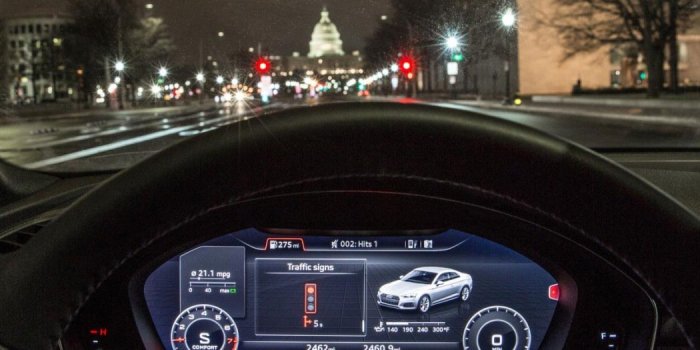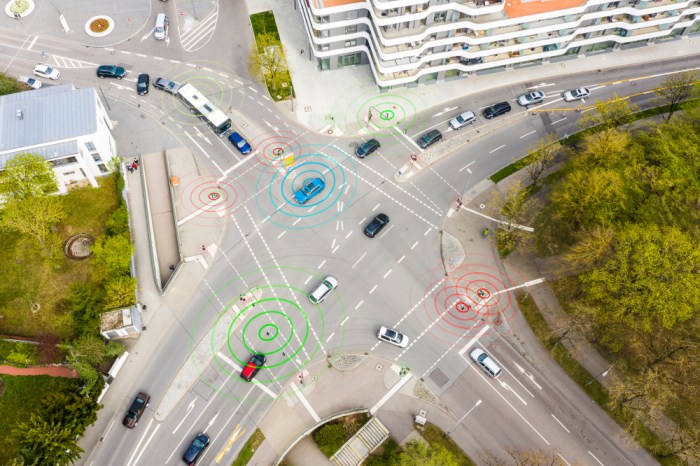Audi’s Connected Car Technology in the US
Audi has been a pioneer in connected car technology, consistently pushing the boundaries of what’s possible in the automotive industry. Their commitment to innovation has led to a suite of features that enhance the driving experience, making it safer, more convenient, and more enjoyable.
History and Evolution
Audi’s journey into connected car technology in the US began in the early 2000s with the introduction of features like Bluetooth connectivity and navigation systems. These early features paved the way for more advanced technologies that would later become integral to Audi’s connected car ecosystem. The introduction of Audi connect in 2011 marked a significant milestone, offering a range of services like real-time traffic information, weather updates, and online music streaming. This marked the beginning of Audi’s commitment to creating a connected car experience that seamlessly integrated with drivers’ digital lives.
Key Features and Functionalities
Audi’s connected car system offers a comprehensive range of features designed to enhance safety, convenience, and entertainment.
- Navigation and Traffic Information: Audi’s navigation system utilizes real-time traffic data to provide optimized routes, avoiding congestion and saving time.
- Emergency Assistance: In case of an accident, Audi’s connected car system can automatically contact emergency services, providing location information and vehicle data.
- Remote Access: Drivers can remotely lock/unlock their vehicles, check fuel levels, and even start the engine using a smartphone app.
- Entertainment and Connectivity: Audi’s system allows drivers to stream music, access internet radio, and make calls through the car’s infotainment system.
- Over-the-Air Updates: Software updates can be delivered wirelessly to the vehicle, ensuring that the system is always up-to-date with the latest features and security patches.
Technologies Enabling Connection to Traffic Signals
Audi’s connected car system utilizes a combination of technologies to connect to traffic signals and receive real-time traffic information.
- Cellular Network: The system relies on a cellular network to communicate with Audi’s servers, which collect and process traffic data.
- Vehicle-to-Infrastructure (V2I) Communication: Audi’s cars are equipped with V2I technology that enables them to communicate with traffic signals and receive information about upcoming traffic conditions.
- GPS and Navigation: The system uses GPS to determine the vehicle’s location and navigation data to plan routes and provide traffic information.
Traffic Signal Integration: Audi Connecting Cars In The U S To Traffic Signals
Audi’s connected car technology in the US takes advantage of traffic signal infrastructure to provide drivers with real-time information and enhance safety. This integration allows Audi vehicles to communicate with traffic signals, receive data about upcoming traffic light changes, and even adjust their speed to optimize traffic flow.
Traffic Signal Systems
Audi’s connected car technology can interact with various traffic signal systems in the US, including:
- Traffic Signal Control Systems (TSCS): These systems manage traffic flow by coordinating traffic light signals at intersections. Audi’s cars can receive data from TSCS to anticipate upcoming light changes and adjust their speed accordingly.
- Connected Vehicle Pilot Programs (CVPP): These programs, often operated by state or local governments, are designed to test and deploy connected vehicle technologies, including traffic signal communication. Audi vehicles participating in CVPPs can receive real-time traffic signal information, enabling smoother traffic flow and reduced congestion.
- Intelligent Transportation Systems (ITS): These systems utilize advanced technologies to manage traffic flow, enhance safety, and improve mobility. Audi’s cars can connect to ITS infrastructure, including traffic signal systems, to access real-time information and optimize their driving behavior.
Data Reception and Interpretation
Audi’s connected car technology uses a combination of communication technologies to receive and interpret information from traffic signals. This process typically involves:
- Dedicated Short-Range Communications (DSRC): DSRC is a wireless communication technology used for vehicle-to-vehicle (V2V) and vehicle-to-infrastructure (V2I) communication. Audi vehicles equipped with DSRC can communicate with traffic signals to receive real-time information about upcoming light changes.
- Cellular Networks: Audi’s cars can also use cellular networks to connect to traffic signal systems and receive information about traffic conditions and upcoming light changes. This method provides wider coverage compared to DSRC but may have higher latency.
- Cloud-Based Services: Audi’s connected car system can access and process data from various sources, including traffic signal systems, through cloud-based services. This allows for more comprehensive data analysis and real-time traffic optimization.
Challenges and Considerations
The integration of connected cars with traffic signals presents numerous challenges and considerations that need to be addressed to ensure a successful and safe implementation. These challenges encompass privacy, security, data protection, infrastructure compatibility, and the need for ongoing development.
Privacy and Data Protection, Audi connecting cars in the u s to traffic signals
Privacy and data protection are paramount concerns in the context of connected cars. The constant exchange of information between vehicles, traffic signals, and other infrastructure components raises questions about the collection, storage, and use of personal data. For example, the location data of a vehicle, its speed, and its driving patterns could be sensitive information that requires robust security measures and transparent data governance.
- Data Collection and Usage: Connected cars collect vast amounts of data, including location, speed, driving patterns, and even driver behavior. This data can be used for various purposes, such as traffic management, personalized navigation, and vehicle maintenance. However, it also raises concerns about data privacy and security.
- Data Sharing and Access: The sharing of data between vehicles, traffic signals, and other entities raises questions about data ownership, access control, and the potential for misuse. Establishing clear guidelines and regulations for data sharing is crucial to ensure responsible use and protect user privacy.
- Data Security and Encryption: The transmission of sensitive data between connected cars and traffic signals requires robust encryption and security measures to prevent unauthorized access and data breaches. Ensuring the integrity and confidentiality of data is essential to maintain user trust and protect privacy.
Security and Cybersecurity
Connected cars and traffic signal integration present a significant cybersecurity challenge. Malicious actors could potentially exploit vulnerabilities in the system to gain unauthorized access to sensitive data, disrupt traffic flow, or even compromise vehicle control.
- Vulnerabilities and Exploits: Connected cars and traffic signals rely on complex software and communication networks, which can be vulnerable to cyberattacks. Hackers could exploit these vulnerabilities to gain unauthorized access to vehicle systems or manipulate traffic signals, potentially leading to accidents or disruptions.
- Data Integrity and Authentication: Ensuring the integrity and authenticity of data transmitted between connected cars and traffic signals is crucial to prevent manipulation and ensure the reliability of the system. Robust authentication protocols and data integrity checks are essential to safeguard against data tampering.
- Security Standards and Compliance: Establishing clear security standards and compliance requirements for connected cars and traffic signal integration is essential to ensure the safety and reliability of the system. Regular security audits and vulnerability assessments are necessary to identify and mitigate potential risks.
Infrastructure Compatibility and Development
Integrating connected cars with traffic signals requires significant infrastructure upgrades and advancements. Existing traffic signal systems may not be compatible with the communication protocols and data formats used by connected cars.
- Legacy Infrastructure: Many existing traffic signal systems are outdated and may not be equipped to communicate with connected cars. Upgrading these systems to support new communication protocols and data formats will be a significant challenge.
- Network Connectivity: Ensuring reliable and robust network connectivity is essential for the seamless operation of connected cars and traffic signal integration. This requires expanding and improving existing cellular and Wi-Fi networks, particularly in areas with limited coverage.
- Interoperability and Standards: Establishing industry-wide standards for communication protocols, data formats, and security measures is crucial for ensuring interoperability between different connected car systems and traffic signal systems.
Audi connecting cars in the u s to traffic signals – Audi’s connected car technology is paving the way for a future where cars are not just vehicles but intelligent partners on the road. By connecting cars to traffic signals, Audi is ushering in an era of safer, more efficient, and more enjoyable driving. As this technology evolves, we can expect to see even more innovative features and functionalities that will further enhance the driving experience and transform the landscape of transportation.
Audi’s move to connect cars in the US to traffic signals is a step towards a more seamless and efficient driving experience, but it also raises concerns about data privacy. This echoes the sentiment expressed by Adblock Plus, who recently called Facebook’s decision to bypass ad blockers anti-user , highlighting the growing tension between technology companies and user control over their online experiences.
Ultimately, the success of Audi’s initiative will depend on how they balance the benefits of connected cars with the need to protect user data.
 Standi Techno News
Standi Techno News

